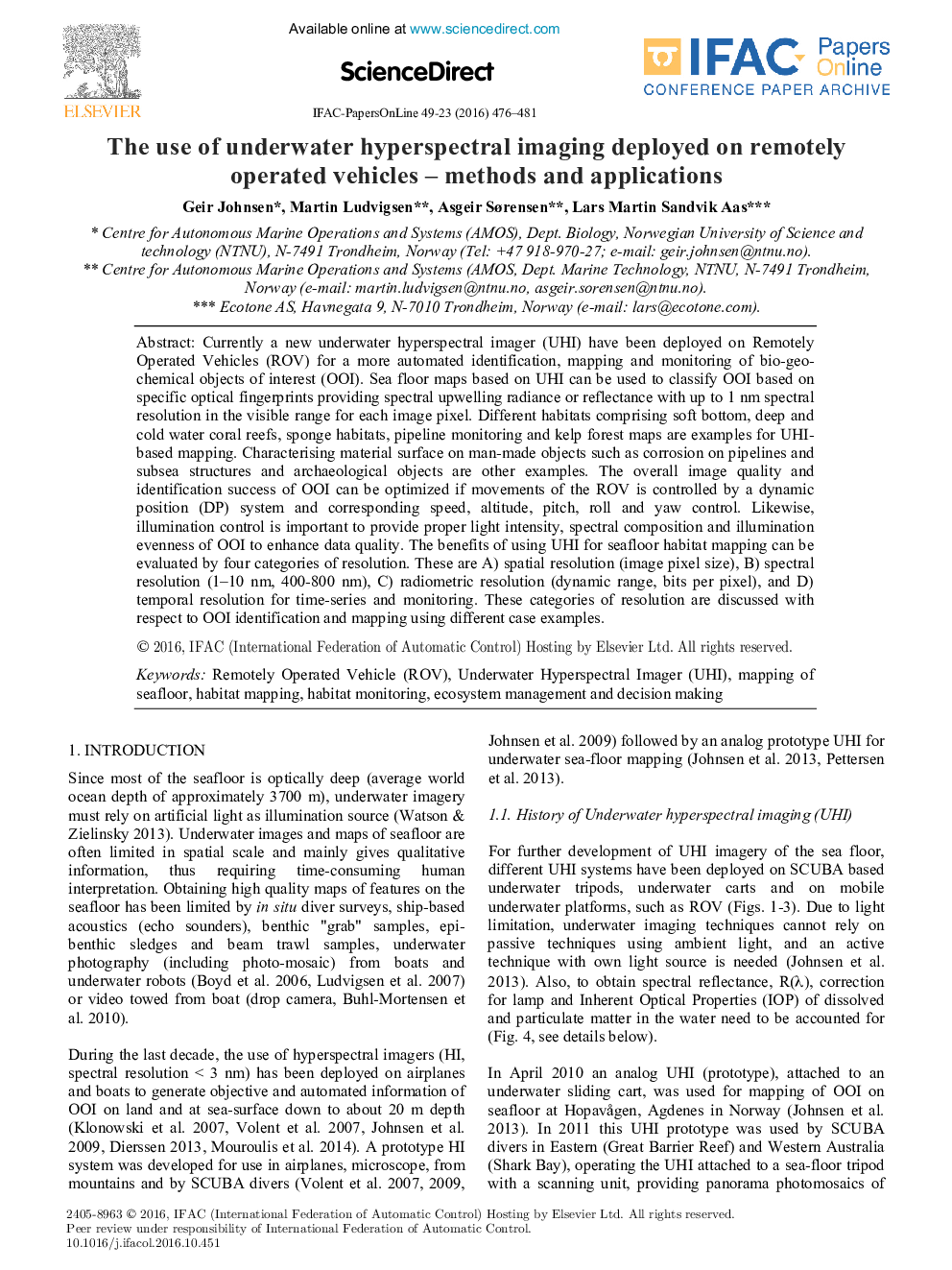| Article ID | Journal | Published Year | Pages | File Type |
|---|---|---|---|---|
| 5002071 | IFAC-PapersOnLine | 2016 | 6 Pages |
Abstract
Currently a new underwater hyperspectral imager (UHI) have been deployed on Remotely Operated Vehicles (ROV) for a more automated identification, mapping and monitoring of bio-geo-chemical objects of interest (OOI). Sea floor maps based on UHI can be used to classify 001 based on specific optical fingerprints providing spectral upwelling radiance or reflectance with up to 1 nm spectral resolution in the visible range for each image pixel. Different habitats comprising soft bottom, deep and cold water coral reefs, sponge habitats, pipeline monitoring and kelp forest maps are examples for UHI-based mapping. Characterising material surface on man-made objects such as corrosion on pipelines and subsea structures and archaeological objects are other examples. The overall image quality and identification success of OOI can be optimized if movements of the ROV is controlled by a dynamic position (DP) system and corresponding speed, altitude, pitch, roll and yaw control. Likewise, illumination control is important to provide proper light intensity, spectral composition and illumination evenness of OOI to enhance data quality. The benefits of using UHI for seafloor habitat mapping can be evaluated by four categories of resolution. These are A) spatial resolution (image pixel size), B) spectral resolution (1-10 nm, 400-800 nm), C) radiometric resolution (dynamic range, bits per pixel), and D) temporal resolution for time-series and monitoring. These categories of resolution are discussed with respect to OOI identification and mapping using different case examples.
Keywords
Related Topics
Physical Sciences and Engineering
Engineering
Computational Mechanics
Authors
Geir Johnsen, Martin Ludvigsen, Asgeir Sørensen, Lars Martin Sandvik Aas,
